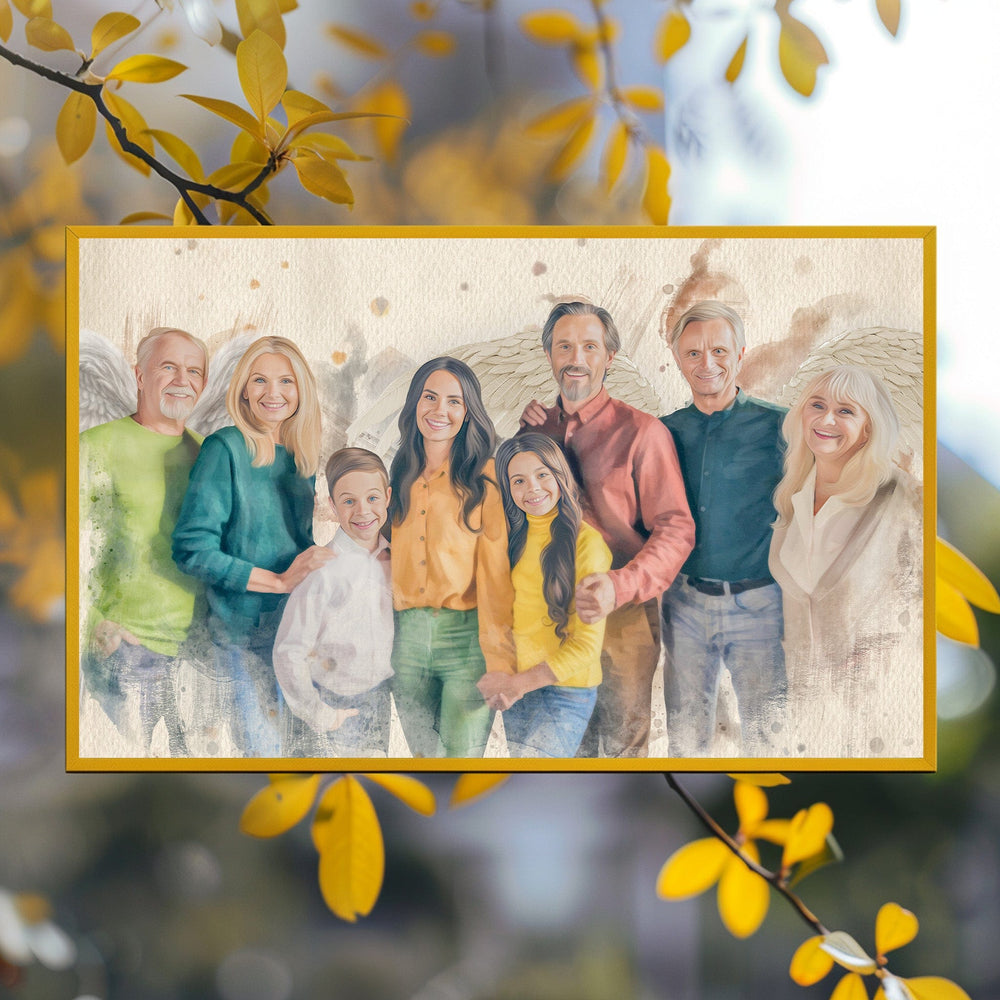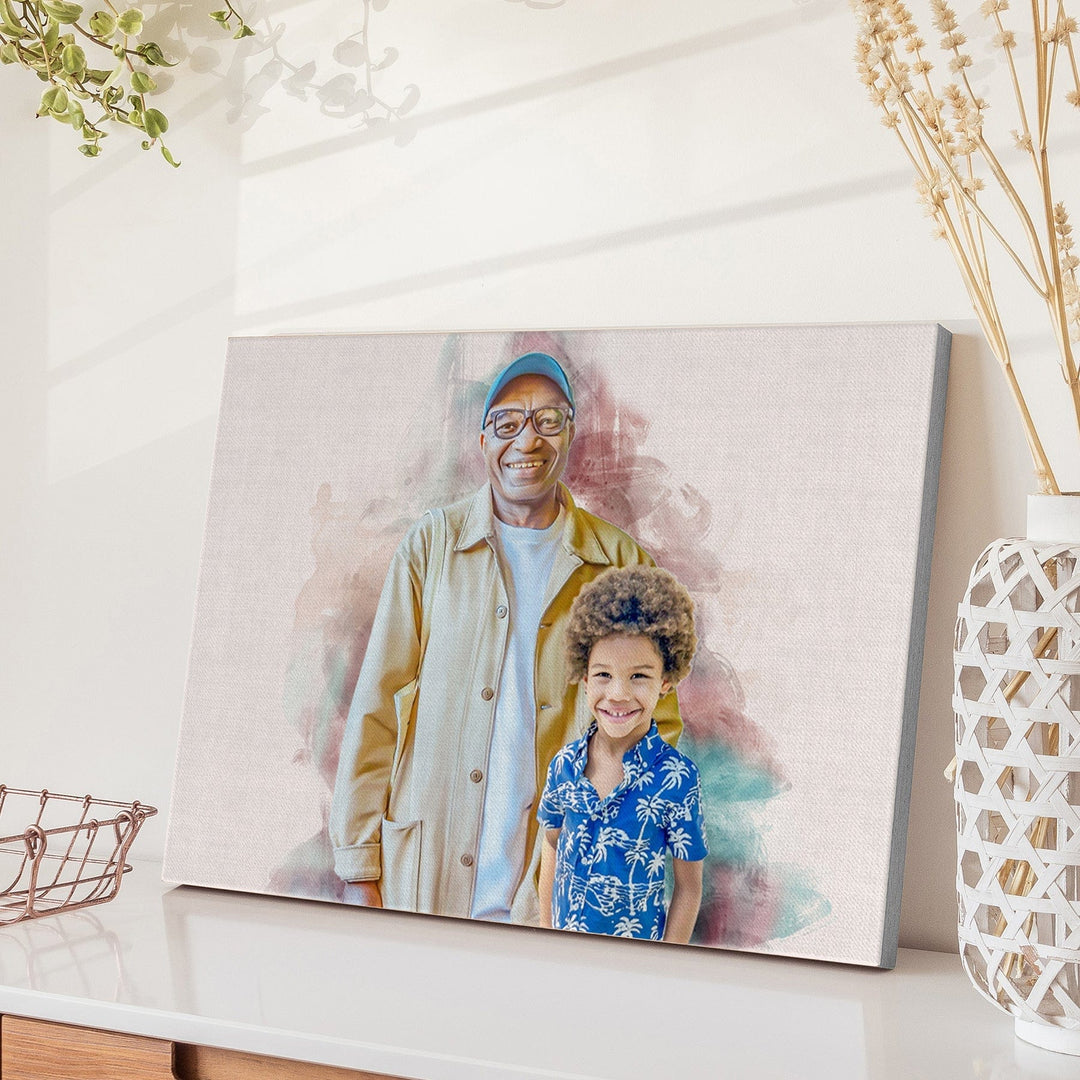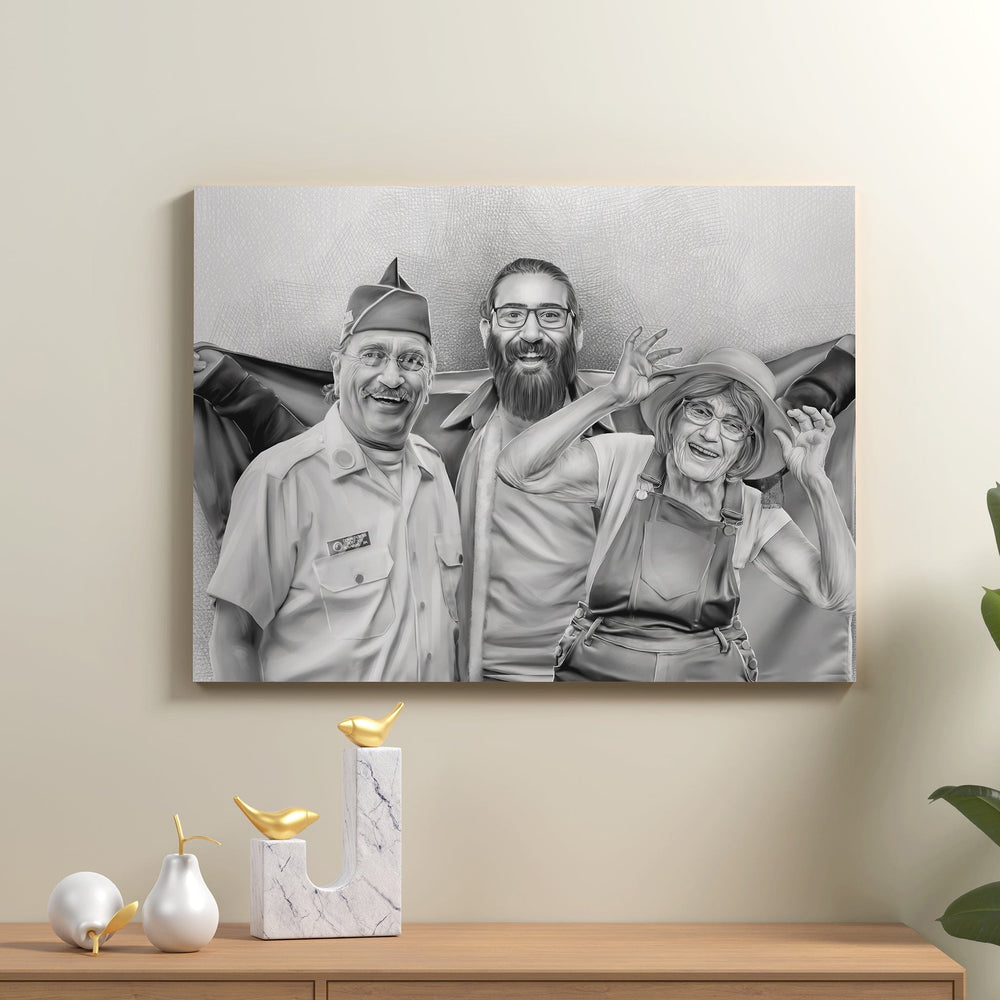Oil Paint Mixing: Understanding The Basics


Photo by Tima Miroshnichenko from Pexels
Artists have cherished traditional oil paint for centuries due to its versatility and expressive capabilities. This painting medium is loved by artists for its rich colors, mixable paint, and ability to show emotion during the painting process. Because it is made with linseed oil, it makes oil paintings smooth and shiny.
If you just started using an oil-based paint, you're probably asking, "What do you mix with oil paint?”. To answer this, you can mix your oil paintings with an oil painting medium, oil-paint solvent, pigments for dark colors, and drying agents to make a couple oil painting more vibrant.
What Are The Properties of Oil Paint?

Order your custom couple oil painting here
Brands of oil paints have pigments that are finely ground and held in a drying oil binder. This allows for the creation of bright, opaque colors that last a long time. Artists can thus have a range of expressive possibilities, allowing for the creation of captivating realistic paintings or enduring abstract paintings.
Compositions and Characteristics
Pigments are the building blocks of oil paints. They give the paint its color and determine its appearance. In oil paints, the binder is the glue that keeps the pigments together and adheres them to the painting's surface. Odorless mineral spirits can alter the appearance, fluidity, and drying time of oil paints.
All these factors, including their oil content, enable artists to fully explore what this type of paint offers. Additionally, adding mediums can provide faster drying times or improve the longevity and stability of the paint layer.
Drying Time
Linseed oil is the most common binder in regular oil paint but dries slower than other types. However, using white pigment provides faster drying times. The thickness of the paint layers also affects its drying time. Thicker layers dry slower than thinner ones, unlike water-based paints like acrylic paint. Mixing oil paint with fast-drying mediums can expedite the drying process.
Pigment Properties
Pigments are responsible for the oil colors. They determine the color mixtures of the oil paints and affect the transparent glazes of the final painting. Artists use opaque pigments for solid areas, impasto techniques, or creating textured effects.
Some use water-soluble oil paints to mix with water for easy cleaning and to reduce color intensity. This can be helpful if you want to show happiness in a family oil painting.
Color Mixing
You can create controlled colors by mixing primary colors with complementary or secondary colors. If uncertain of the outcome, use an oil paint color mixing chart. Every pigment has an inherent color bias, influencing its behavior when mixed with other colors. For example, cadmium yellow may be combined with red to create shades of orange, or mixing reds with Naples yellow may create lighter red shades.
Mixing Mediums for Oil Paint

Order an oil painting of your family portrait here.
Linseed oil and stand oil are often used to thin and extend paint, enhancing its fluidity and transparency. Solvents like paint thinner and mineral spirits are used to thin paint, clean brushes, and modify the paint's consistency.
With the aid of mixing mediums, artists can explore new techniques, control the thickness of their paint, achieve specific finishes, and adapt their methods to suit their artistic style and vision.
Traditional Mixing Techniques

Order your custom family oil painting here
Traditional mixing techniques in oil painting hold a venerable place, revered for their ability to produce a plethora of beautiful colors and effects. Understanding these methods is crucial for any artist looking to master the craft and create stunning works of art.
The Essence of Traditional Mixing
Traditional mixing techniques revolve around the understanding and application of color harmony and the color mixing process. These techniques are not just about combining colors but also about understanding how different colors interact and influence each other. This understanding is crucial for achieving the desired end-result color.
Exploring Color Mixes
The journey begins with the basics - the original colors or primary colors. By mixing these colors in various proportions, an artist can create an extensive palette of secondary colors. This exploration is an essential part of the experimentation with colors and forms the basis of traditional mixing techniques.
Achieving Buttery Consistency and Color Purity
One of the hallmarks of oil painting is its buttery consistency, which allows for smooth application and blending. Achieving this consistency often involves the careful addition of mediums like linseed oil, which enhances the fluidity and workability of the paint. Moreover, to ensure the purer color quality, artists often focus on minimizing color contamination during the mixing process.
The Role of Mediums in Traditional Mixing
Using different kinds of mediums such as leaner mediums and oil mediums can vastly influence the characteristics of the paint. Solvent-free mediums and mediums for oil painting like linseed oil or walnut oil can modify the fluid consistency of the paint, aiding in layering and glazing techniques.
Manipulating Color Intensity
Traditional mixing involves adjusting the intensity and depth of colors. Techniques like adding additional white, such as Titanium White or Zinc-Titanium White, can create a lighter shade or countless shades of a particular color. Conversely, incorporating a Color mix darker can deepen the tones, adding depth and dimension to the work.
Experimenting with Color Samples
Creating color mixing samples is a valuable practice in traditional mixing. This involves preparing small samples of color mixtures on a color journal or a folder with color. It serves as a future reference, forming a future color mixing guide for the artist.
Avoiding Common Pitfalls
Traditional mixing also involves understanding what to avoid, such as the risk of creating an underbound paint film or dealing with excess oil paint. Artists learn to gauge the right amounts of paint to use and how to maintain the balance between the pigment and the oil to ensure paint adhesion and durability.
Mixing Colors for Tints and Shades

Order your custom dog oil pastel portrait here
Mixing Colors for Tints and Shades is crucial for achieving the desired visual impact and emotional tone of pastel portraits. When creating tints, artists often incorporate additional white to their base colors. This technique lightens the hue, resulting in a myriad of countless shades and softer tones that can convey subtlety and delicacy in the painting. Conversely, for shades, a dab of paint from a darker color is mixed in to deepen the base color, lending intensity and boldness. This technique is particularly useful in creating dramatic effects or emphasizing shadows and contours.
A key aspect of this process is maintaining the fluidity of oil paints, which ensures a smooth blending of colors. Artists often utilize a leaner medium to maintain the consistency and workability of the paint. The choice of medium can significantly affect the transparent colors, thereby impacting the overall look of the tints and shades. Furthermore, the oil color mixing process demands a meticulous balance to avoid underbound paint film, ensuring that the paint adheres well to the canvas without losing its vibrancy
Color Mixing Techniques

Get your wedding oil painting here
All color mixing starts with red, blue, and yellow, the primary colors. Artists can create a wide range of secondary and tertiary colors from these pure colors. In regular oil paints, artists can manipulate color temperature by adjusting the paint ratio to create warm and cool tones, like in a wedding oil painting.
Artists can also change a color's value by mixing oil paints with white oil paints to create lighter colors or black to create darker colors. By altering the value, artists can depict highlights and shadows, giving the impression of three-dimensionality in their artwork.
Oil Paint Mixing Tips

Order an oil painting of a cherished moment with your partner here.
Use a Clean Painting Palette
A clean palette gives you a neutral background against which you can judge the colors you are mixing correctly. Leftover paint or spots from earlier sessions can change how you see colors.
Use an Oil Paint Color Mixing Chart
An oil paint color mixing chart is a reliable reference tool for understanding the relationships between different colors. It allows for experimentation and exploration of new color possibilities.
Play With Blending Techniques
Blending techniques helps add depth, visual harmony, textural effects, and personal expression to an oil painting. It creates a unified and balanced composition, where colors flow seamlessly and create a visually pleasing aesthetic.
Frequently Asked Questions
Can I mix oil paints directly on canvas?
Yes, oil paint can be mixed right on the board. For this method, you put new coats of wet paint on top of already wet paint.
What should I use to clean oil paint brushes?
Clean with mineral spirits or turpentine. Both solvents dissolve oil paint and clean brushes. Odorless mineral spirits are safer than turpentine and mineral spirits.
Can oil paint and acrylic paint be used in a single artwork?
Yes, but some factors like adhesion, drying properties, and surface should be considered.
Preserve Your Memories With Custom Oil Paintings from Memorialize Art
The journey of oil paint mixing is a truly wonderful time for any artist. It opens up a world where the variety of mediums and a single paint mixture can transform a canvas into a vibrant work of art.
The understanding of color mixing is fundamental, as it allows an artist to experiment with a sample of oil color, play with paintings with colors, and perfect their oil color application. Even with a limited oil color palette, the possibilities are endless.
If you want to own a personalized art, Memorialize Art is the way to go. At Memorialize Art, every custom oil painting is meticulously crafted based on your vision, preferences, and any specific details you wish to incorporate into the painting. Whether it's a portrait of a loved one, a wedding moment, a family gathering, or a beloved pet, all artworks capture the essence and emotion of your most treasured memories.









